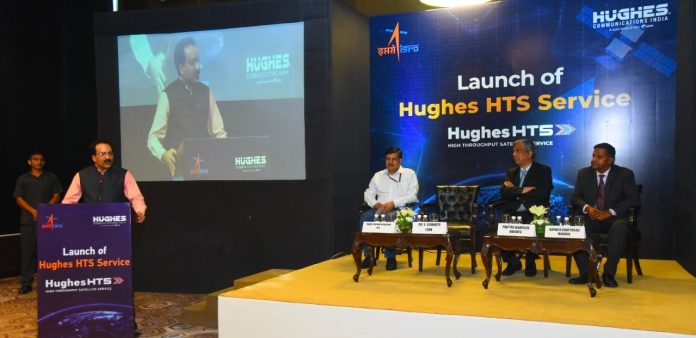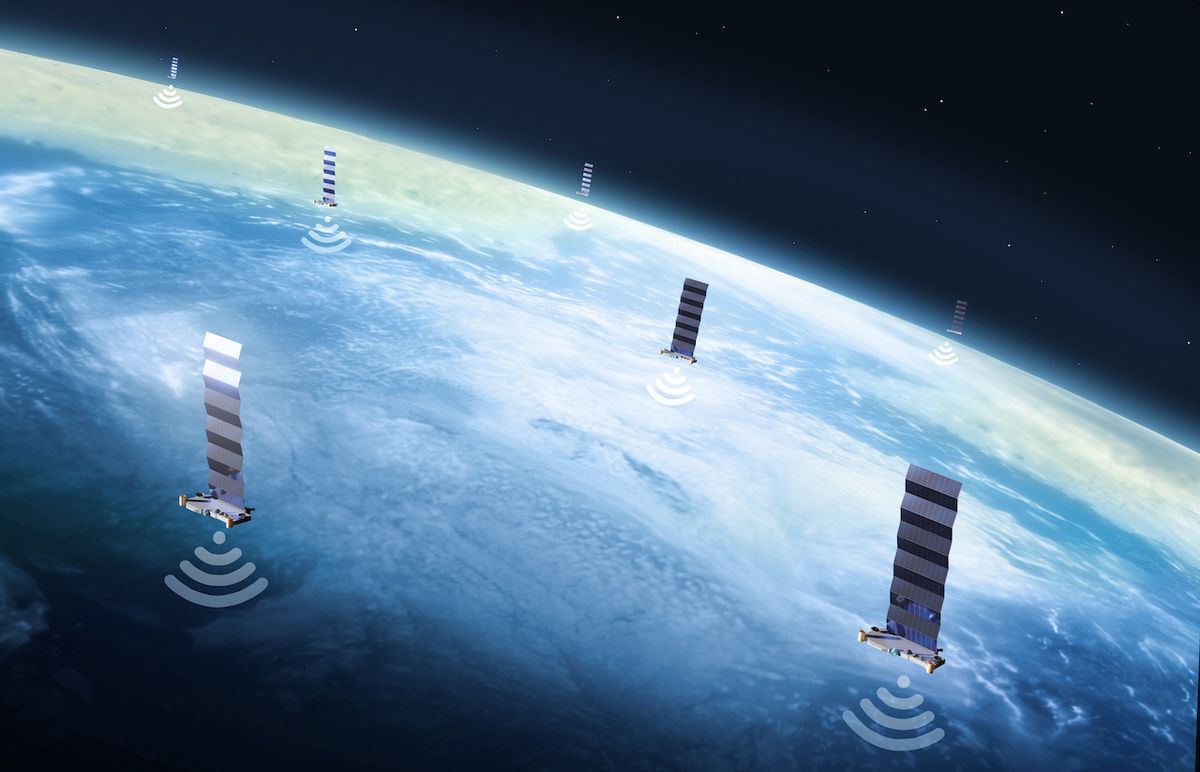ISRO and Hughes Now Launched India’s 1st commercial satellite broadband service

Hughes Communications India (HCI) has launched India’s first commercial broadband High-Capacity Satellite (HTS) service. Hughes will provide HTS broadband connectivity using the Indian Space Research Organization’s (ISRO) GSAT-11 and GSAT-29 satellites.
With its inherent advantages and ubiquitous nature, the new HTS service will play a key role in extending broadband connectivity to the most remote, else hard-to-reach places, making economic openings to recover the economy,” said S Somanath.

The new service by Hughes should be able to deliver high-speed internet to remote locations and enable solutions such as Wi-Fi hotspots for community internet access, backhaul to extend mobile network spread, and internet for small trades.
Advantages Of Hughes In A Broader Perspective
Hughes will provide a new broadband service that will address connectivity gaps, improve network performance and support the high bandwidth requirements. It is to assist government organizations, financial companies, mobile operators, mining and energy companies, and other large and small businesses, helping to connect India to an unlimited future, as informed by Partho Banerjee, president, and chief executive officer of HCI.
Elon Musk’s company SpaceX has the same facility as Starlink. It uses a constellation of low-earth orbit (LEO) satellites to offer high-speed satellite cyberspace. Starlink had plans to expand its business into India. It had even registered a business unit in India before running into regulatory hurdles. It is unclear whether Hughes’ dual-satellite solution will offer internet connections as fast as Starlink, which offers average speeds of around 90Mbps in regions where it is available.
Hughes Communications India, a joint venture between US-based Hughes Network Systems and Indian telecom operator Bharti Airtel, has announced the launch of its first High-Throughput Satellite (HTS) broadband internet service in the country offering satellite internet to remote locations across India and will use the Indian Space Research Organization’s (ISRO) Geosynchronous Satellite (GSAT)-11 and GSAT-29 satellites to offer the service.

Speaking to Mint, Shivaji Chatterjee, Senior Vice President, Hughes Communications India, said the Hughes service can offer internet connection bandwidth of up to 100 Mbps. On March 22, Chatterjee told Mint in an interview that the service is expected to offer bandwidth between 2-10 Mbps.
He also confirmed that the service by Hughes has been tested over the past year in select areas such as Jammu, Kashmir, and Himachal Pradesh, where difficult terrain often results in a lack of physical, land-based connectivity. Today’s launch expands the Hughes HTS service across India.
HTS refers to satellite connectivity that offers higher bandwidth which in turn increases the amount of data that could be transferred between the satellite and the ground station. Typical satellite connectivity is characterized by low bandwidth as well as high connectivity latency – the time between a set of data to be transferred between sender and receiver. The only motto of this step is to boost the economy. India needs to focus more on technology-based advancements. This will increase connectivity and make the general job easy to perform.
HTS satellites by Hughes aim to improve connectivity and therefore bring satellite internet connections closer to the standard of terrestrial internet networks.
Nishant Bansal, senior research manager for telecommunications, Asia Pacific at market research firm International Data Corporation (IDC), said the satellite broadband market is still limited even in industrial applications, and while many operators have the capacity on paper to provide connections up to 100 Mbps in bandwidth, their use markets do not require such large bandwidths.
Illuminating how Hughes’ HTS network now works, Chatterjee told that their earlier strategies were restricted to speeds between 256 kbps and 2 Mbps and gave around 4 GB of data per month.” Bansal added that there were discussions within the Department of Telecommunications (DoT) to approve the 26 GHz frequency band for use of satellite connectivity, which could lead to more companies entering the satellite internet.
While JIO uses Hughes service for 4G backhaul to offer services to remote locations for its terrestrial telecom network, SBI uses Hughes service for connectivity at remote bank branches and ATM branches. In 2018, ISRO launched GSAT-11 and GSAT-29 to offer higher bandwidth satellite connectivity to Indian clients in the enterprise space. Sivan said in a press conference that the satellite is capable of offering a peak data bandwidth of 14 Gbps through satellite networks.

While the GSAT-11 and GSAT-29 satellites carry transponders (instruments that transmit data from satellites) in both Ku and Ka-band frequencies, the Hughes HTS service will use only the Ku band for high-bandwidth data transmissions. Chatterjee confirmed that Hughes had requested the use of higher Ka-band frequencies with India’s space technology authority for nodes, the Indian National Space Promotion and Authorization Center (IN-SPACe).
However, Chatterjee added that Ka-band frequencies face higher interference from obstacles such as rain and forest cover, which could be obstacles that the eventual development of satellite Internet technology will seek to address. However, Chatterjee commented that Ka-band frequencies have higher interference from hindrances such as rain and forest cover, which could be hurdles that the eventual evolution of satellite internet technology will look to solve.



